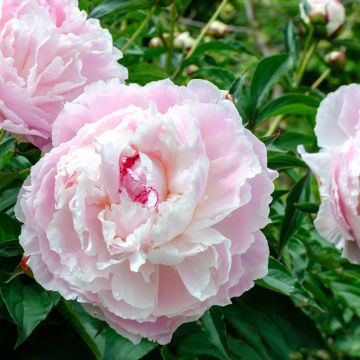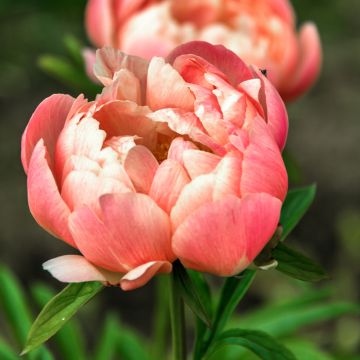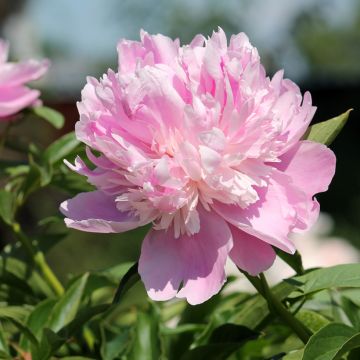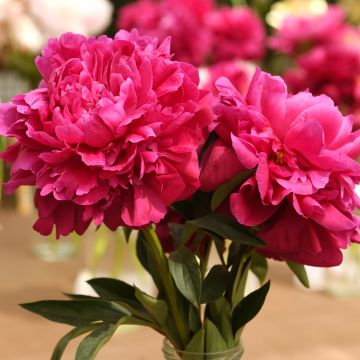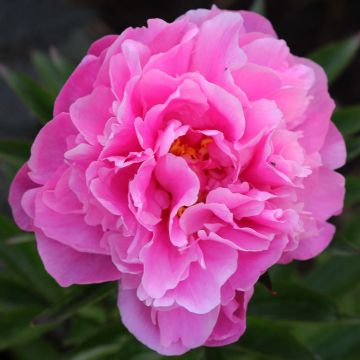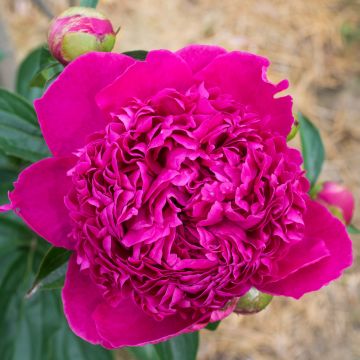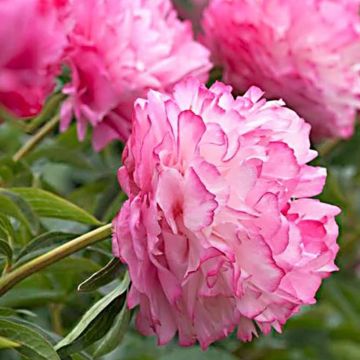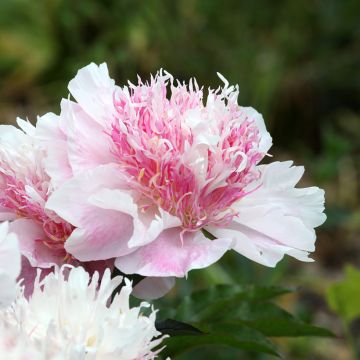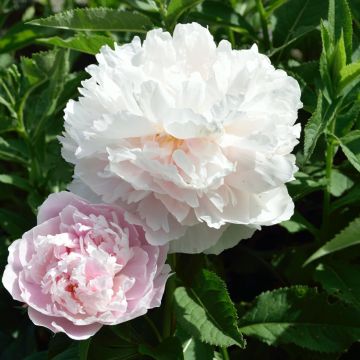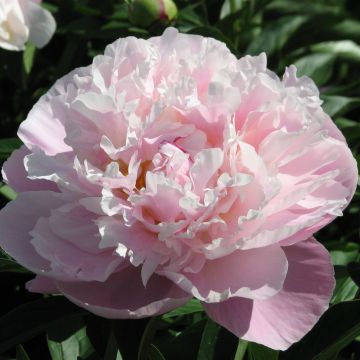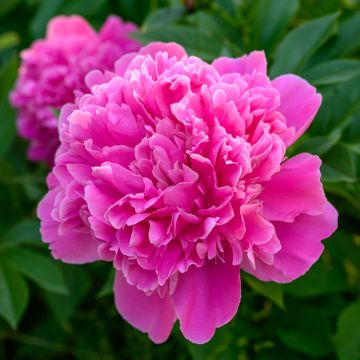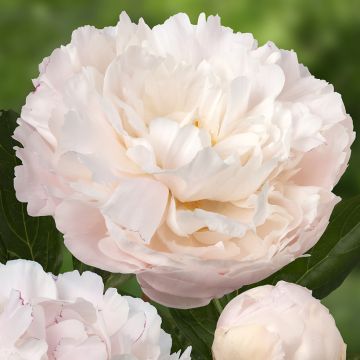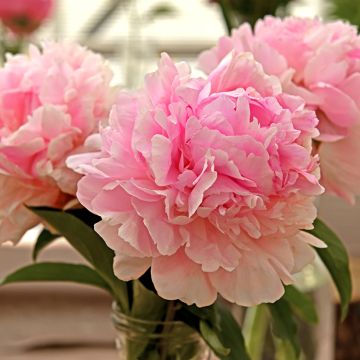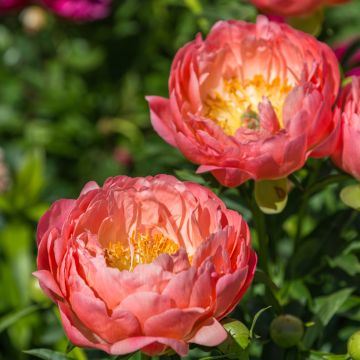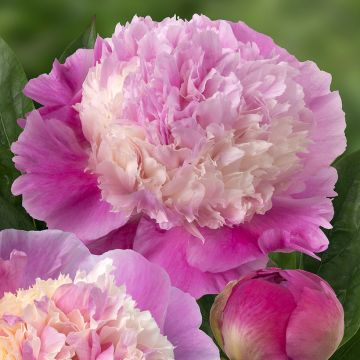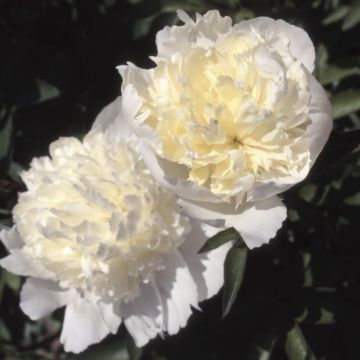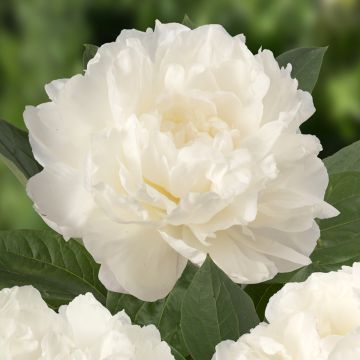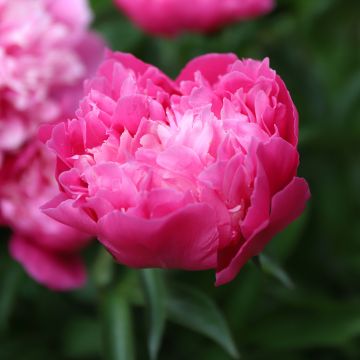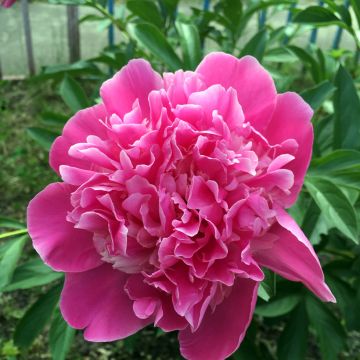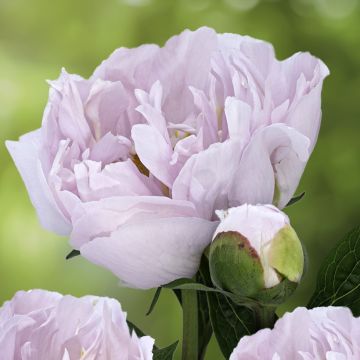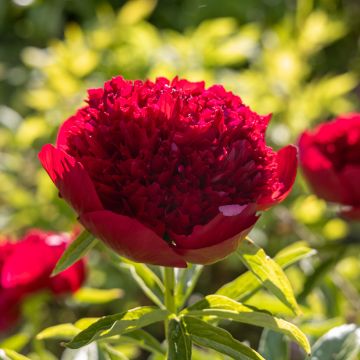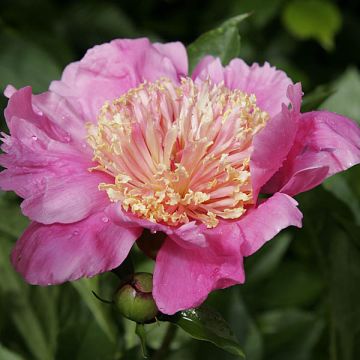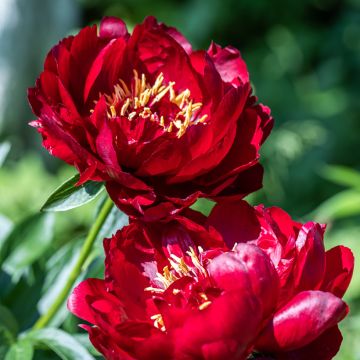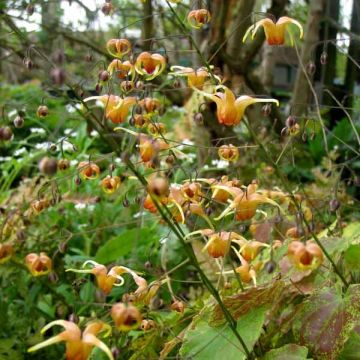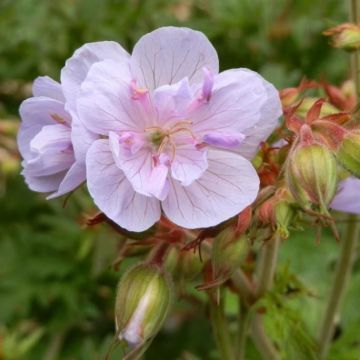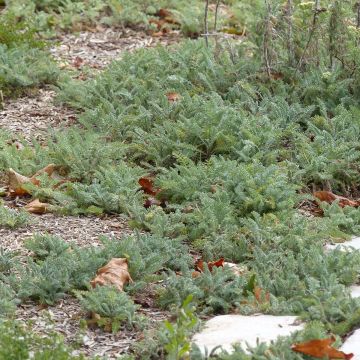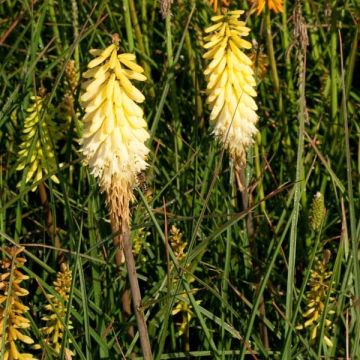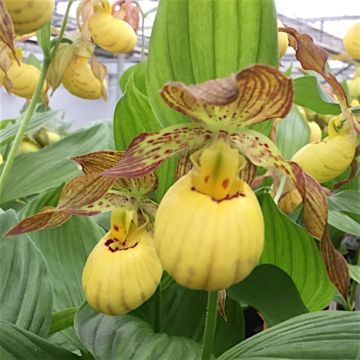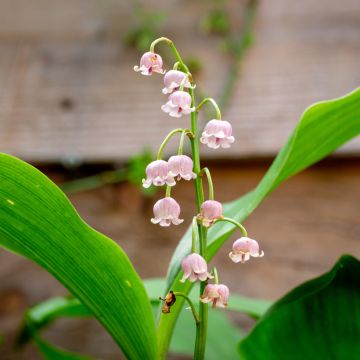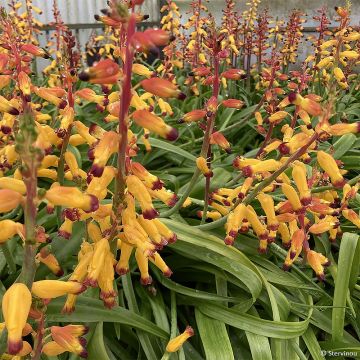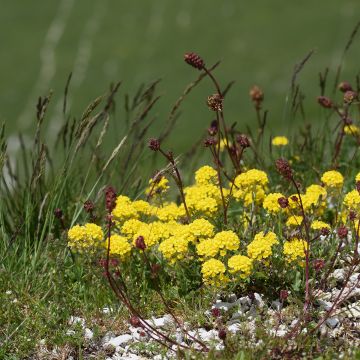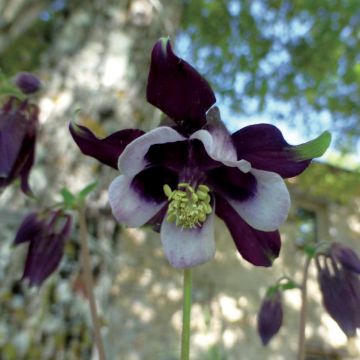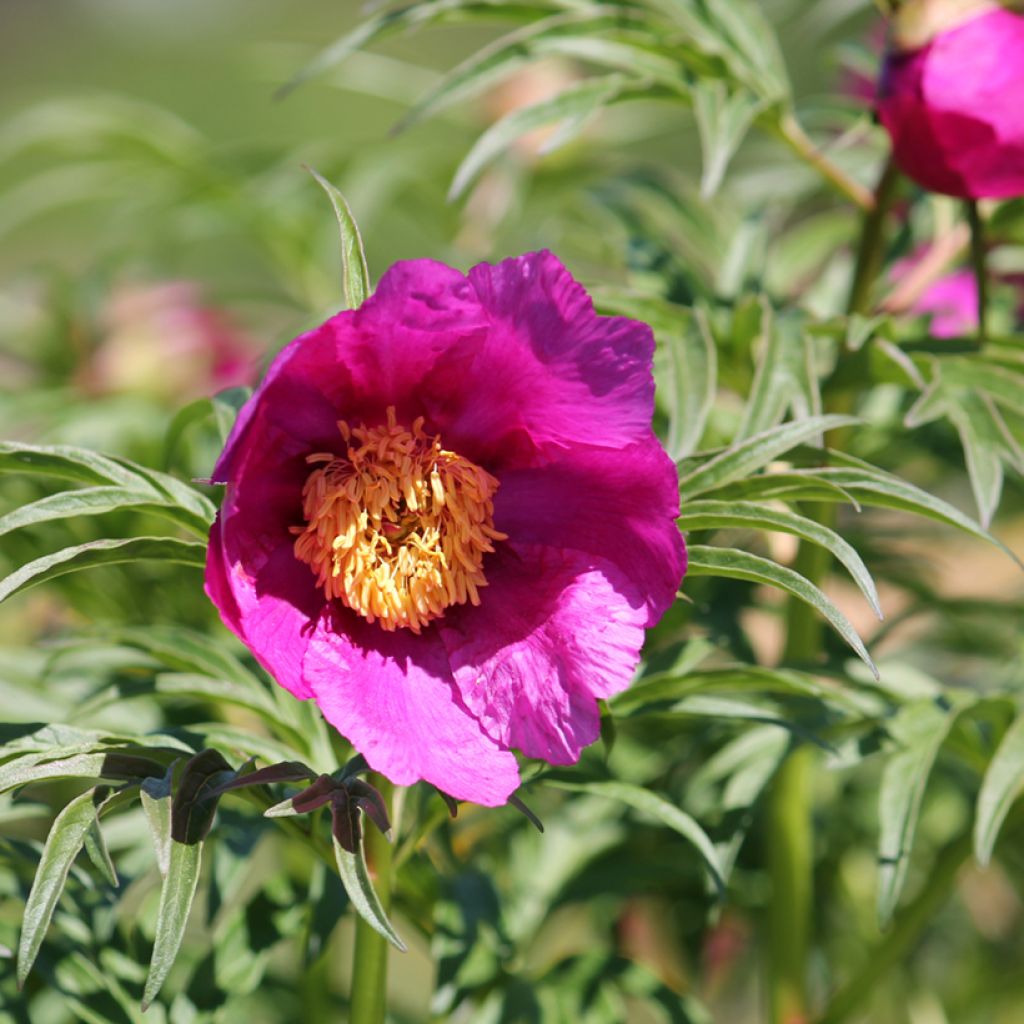

Paeonia anomala
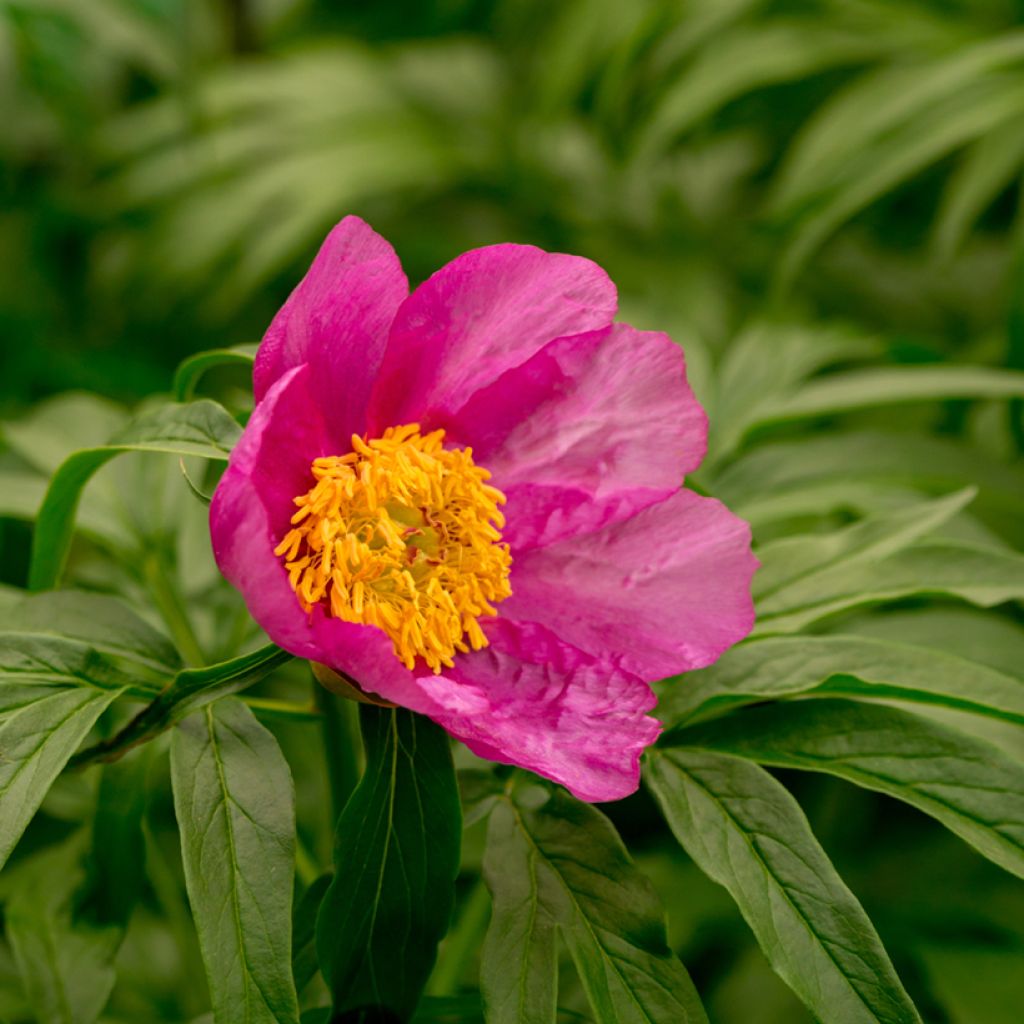

Paeonia anomala
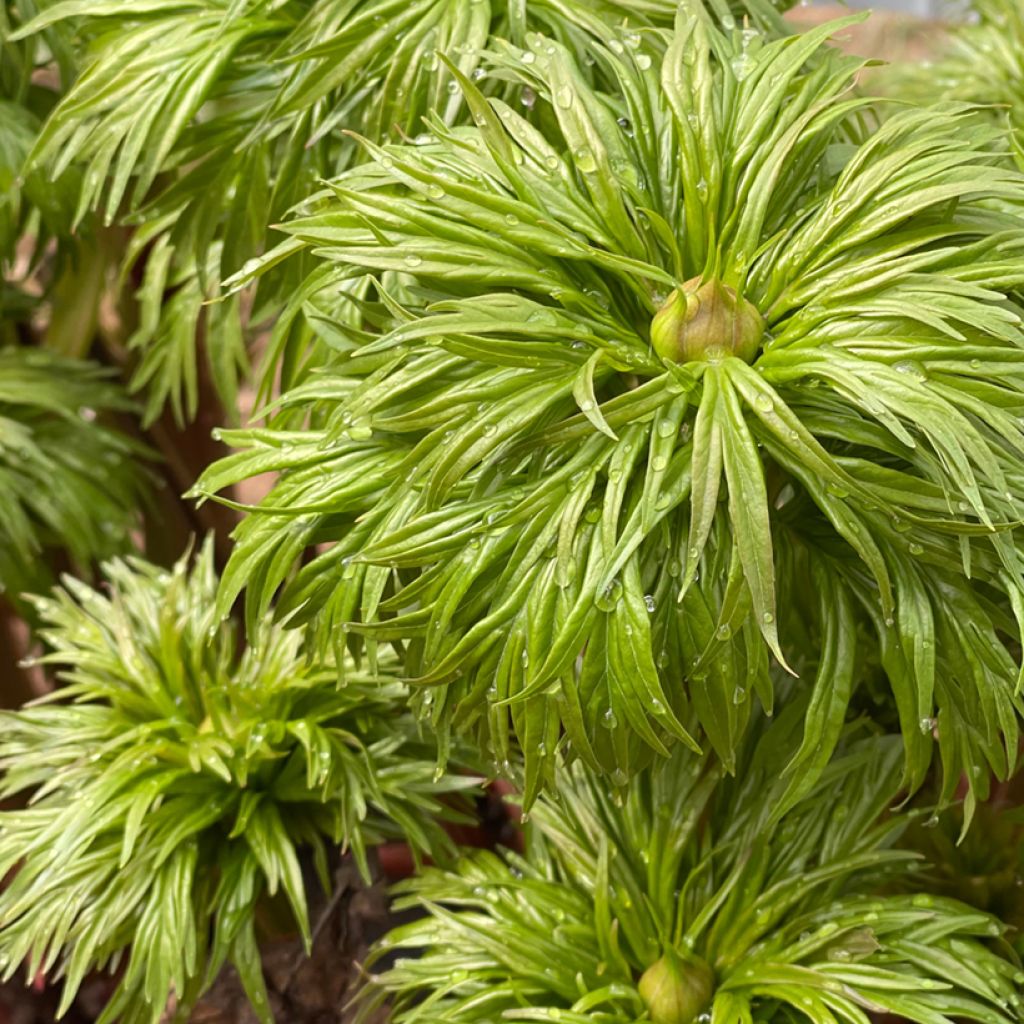

Paeonia anomala
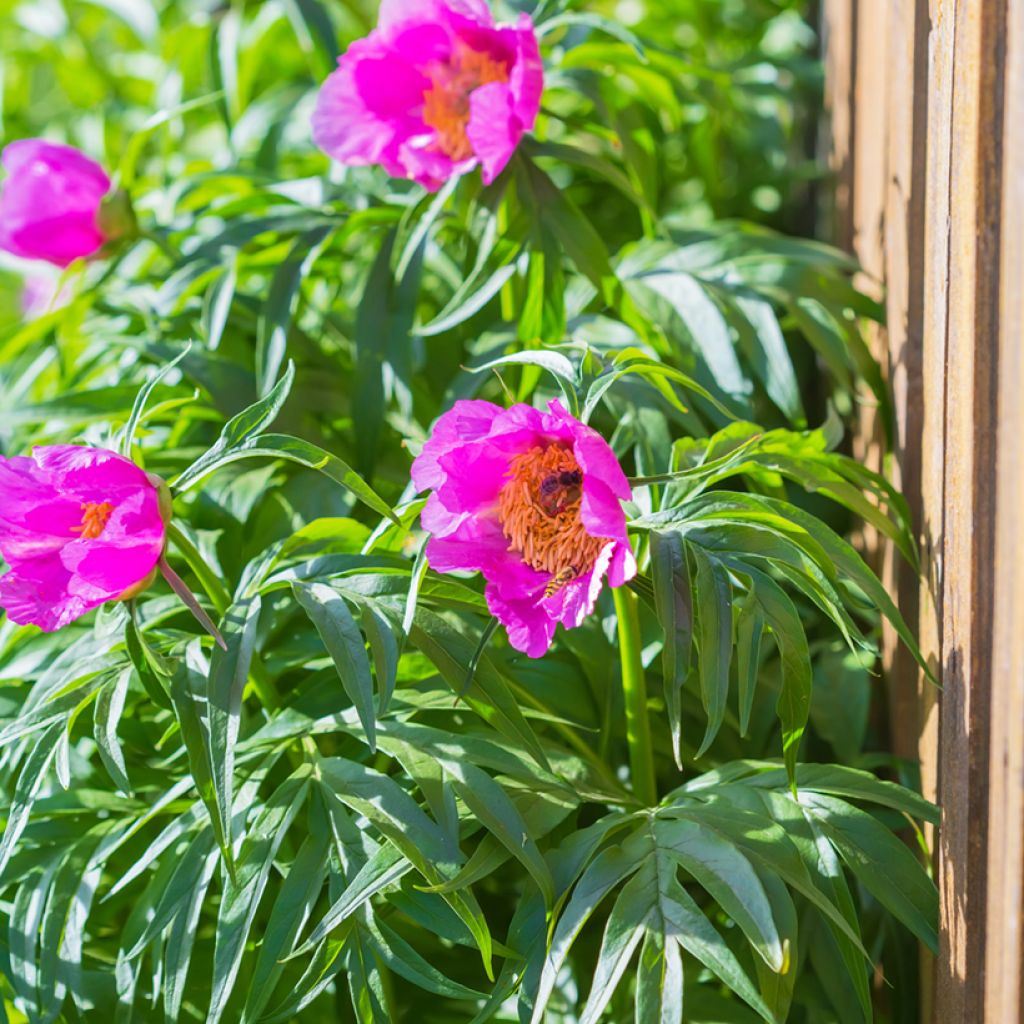

Paeonia anomala
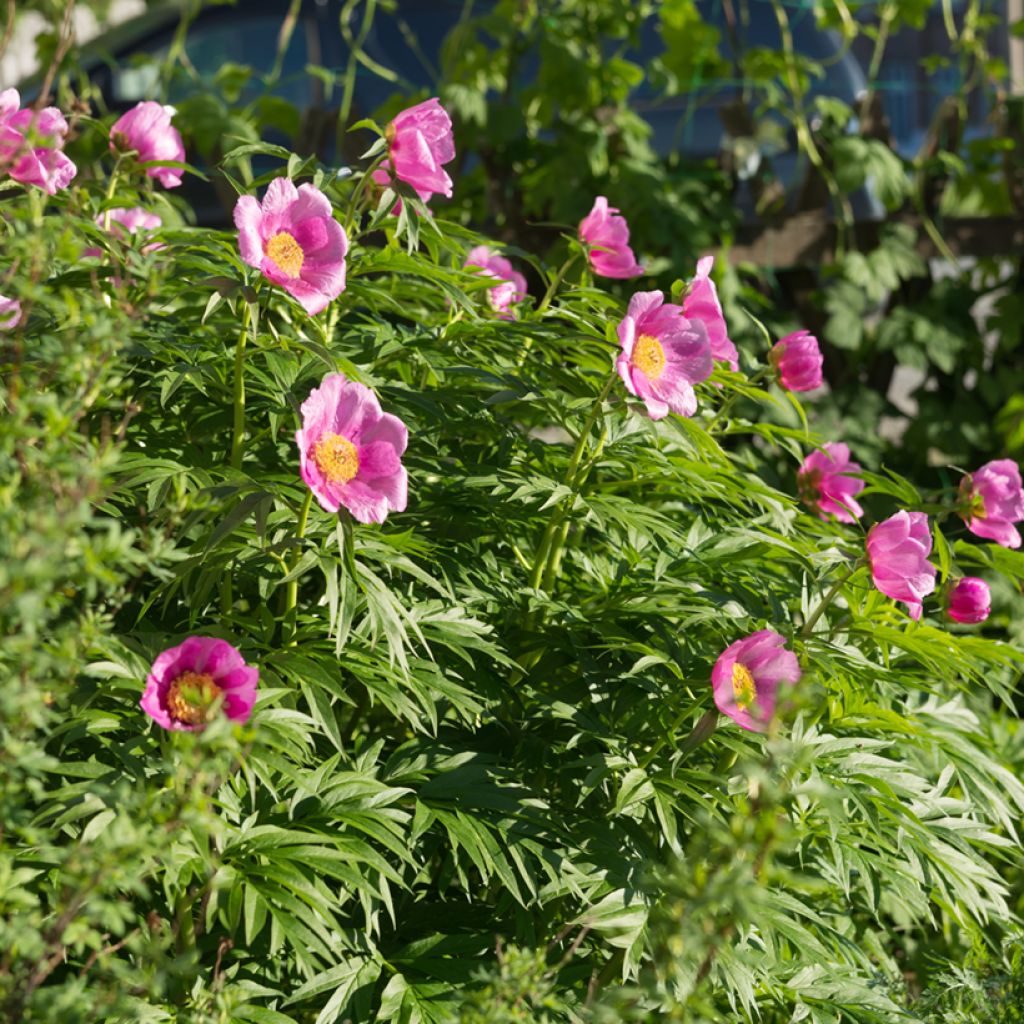

Paeonia anomala
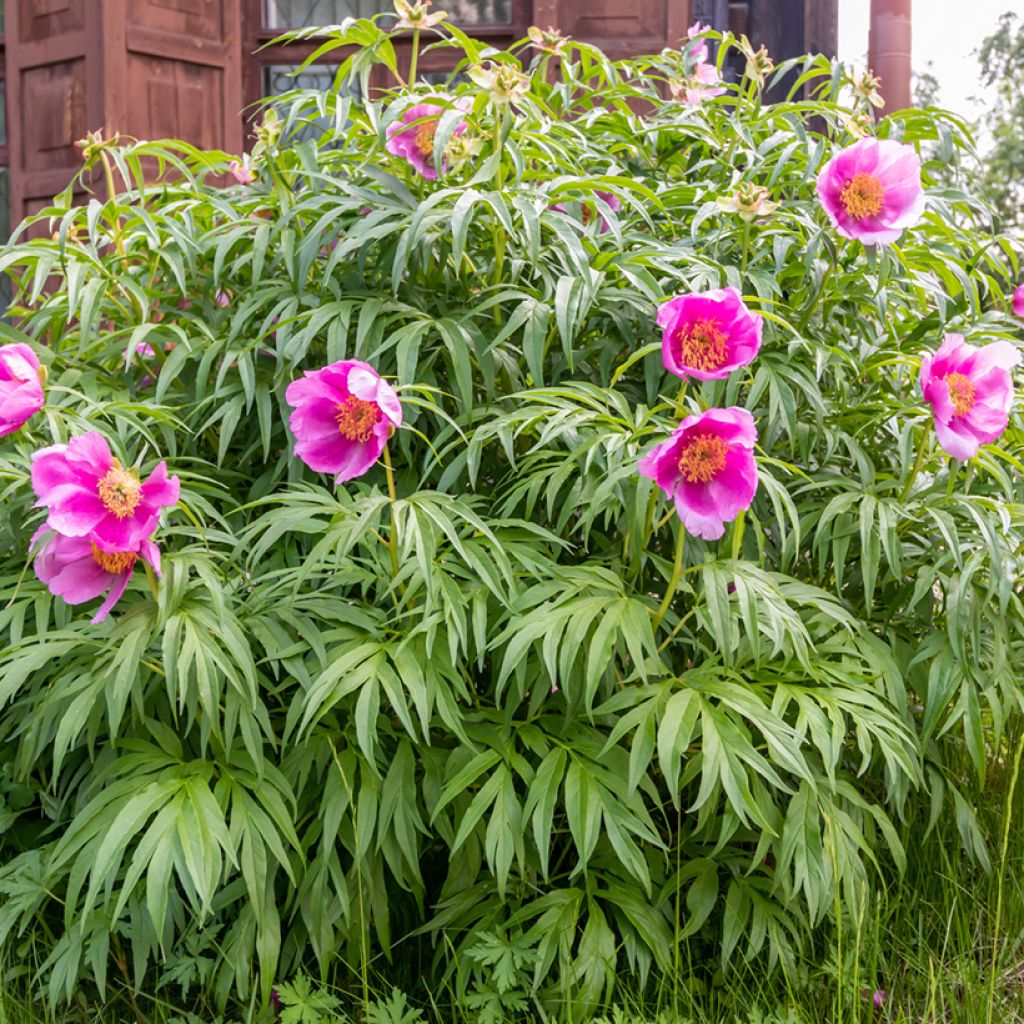

Paeonia anomala
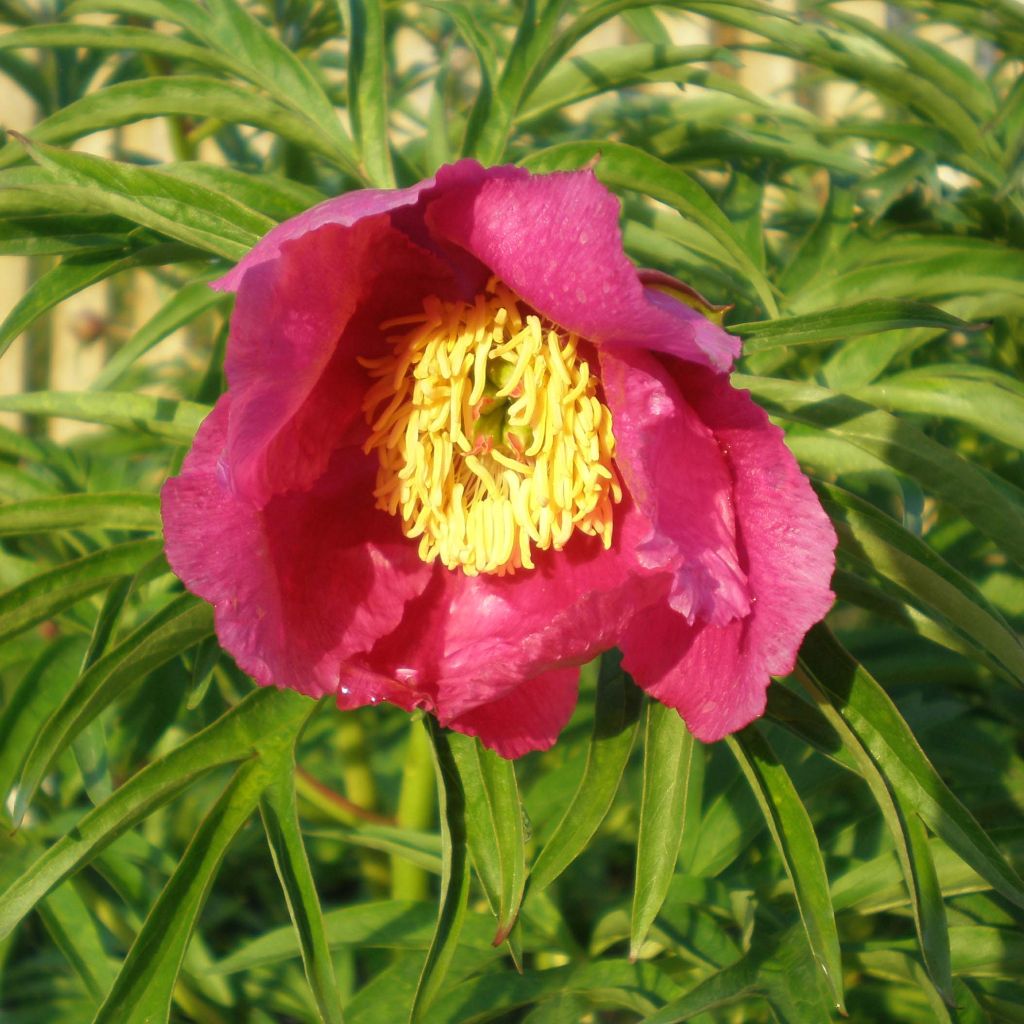

Paeonia anomala
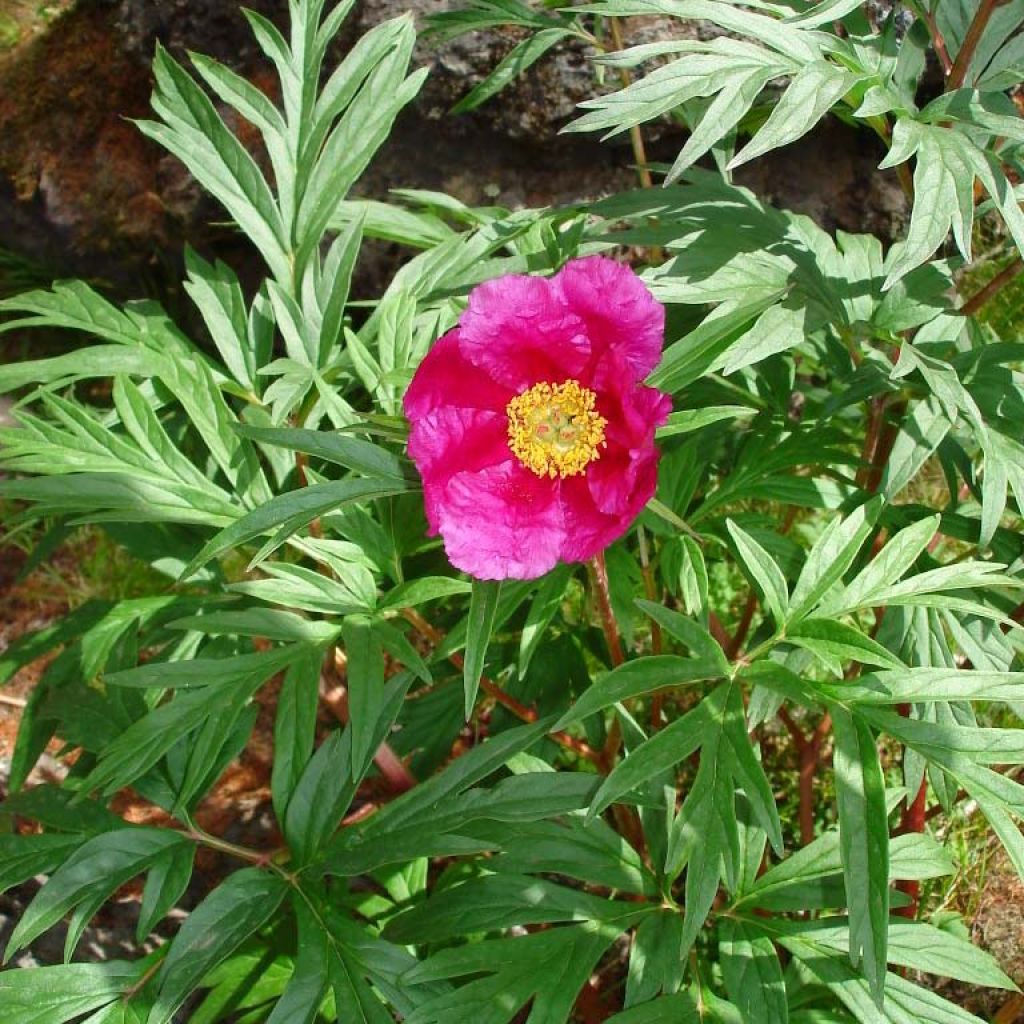

Paeonia anomala
Paeonia anomala
Paeonia anomala
Herbaceous Peony, Botanical Peony
Why not try an alternative variety in stock?
View all →This plant carries a 12 months recovery warranty
More information
We guarantee the quality of our plants for a full growing cycle, and will replace at our expense any plant that fails to recover under normal climatic and planting conditions.
From €5.90 for pickup delivery and €6.90 for home delivery
Express home delivery from €8.90.
Does this plant fit my garden?
Set up your Plantfit profile →
Description
Paeonia anomala, widespread up to Siberia, is one of the hardiest botanical peonies and one of the easiest to acclimatise to the garden. This rare wild plant blooms as early as April depending on the climate, making it one of the first peonies to light up the garden. Its simple and silky flowers display a deep and vibrant pink colour, sometimes tinged with hints of lilac, and are centred around a large heart of soft yellow stamens. The flowering is enhanced by foliage of brilliant green, deeply cut and beautifully textured. This wild peony thrives in the same conditions as Chinese peonies, in well-drained, ordinary soil, in a sunny or semi-shaded site.
Paeonia anomala is a perennial herbaceous plant with large fleshy rhizomes, originating from a vast region that stretches from Europe to Asia. It can be found from Siberia to Central Asia, Mongolia, and northern China. Its natural habitat consists of coniferous woods, dry meadows, and rocky hills. In our gardens, it thrives in the same conditions as most other peonies, in well-drained and fertile soil. Like all peonies, it belongs to the Ranunculaceae or Paeoniaceae family. It is a very hardy plant, especially when protected by a snowy mantle. Its growth is slow during the first years, eventually forming a bushy clump measuring 60 to 90 cm (24 to 35in) in all directions. Its stems bear leaves divided into numerous leaflets, deeply incised into 2 or 4 narrow segments, and pointed at their tips, with a glossy green colour on the upper side, and a matte, bluish hue on the underside. The young spring shoots are tinged with bronze. The cup-shaped flowers appear from April to June, at the end of the stems and in the axils of the leaves, in small clusters of 2 to 4 large flower buds. They measure 7 to 10 cm (3 to 4in) in diameter and are composed of shiny ray florets, dark pink with lilac reflections, surrounding a large heart of soft yellow stamens. When in full bloom the flowers turn upwards to the sky, and when they first open - similar to those of the Meconopsis (Blue Poppy) - they are tilted towards the ground. This slightly scented flowering is followed by the formation of black, round, and smooth seeds, which germinate after exposure to cold.
Peonies are among those plants that form the foundation of a garden. In the past every garden, from the humblest to the most elaborate, proudly displayed clumps of peonies that made their way into the house, keeping lilacs and bluebells company in bouquets. Charming and wild, Paeonia anomala opens the peony season with elegance and discretion. It thrives in well-drained beds, cool rockeries, or alongside pathways, associated with timeless perennials such as columbines, bellflowers, masterworts, carnations, or Christmas roses. Pot cultivation is not recommended as its needs will not be met. Over time the peony becomes majestic, multiplies, and blooms more and more abundantly.
Report an error about the product description
Paeonia anomala in pictures






Flowering
Foliage
Plant habit
Botanical data
Paeonia
anomala
Ranunculaceae
Herbaceous Peony, Botanical Peony
Central Asia
Other Herbaceous and hybrid Peonies
Planting and care
Like all peonies, Paeonia anomala does not like to be moved, so think carefully about the right place to install it. The best time to plant is in spring or autumn. Choose a sunny or well-lit site, with deep, well-loosened, properly drained soil. They need space and dislike competition from other species. Prepare a hole 50 x 50 x 50 cm (20in) and add a thin layer of sand or gravel at the bottom to provide drainage around the roots. Mix organic fertiliser into your soil, partially backfill the hole, place your young plants inside and cover with 6 cm (2in) of soil above the buds (eyes). After planting, tamp down and water generously.
Planting period
Intended location
Care
This item has not been reviewed yet - be the first to leave a review about it.
Spring flowering perennials
Haven't found what you were looking for?
Hardiness is the lowest winter temperature a plant can endure without suffering serious damage or even dying. However, hardiness is affected by location (a sheltered area, such as a patio), protection (winter cover) and soil type (hardiness is improved by well-drained soil).

Photo Sharing Terms & Conditions
In order to encourage gardeners to interact and share their experiences, Promesse de fleurs offers various media enabling content to be uploaded onto its Site - in particular via the ‘Photo sharing’ module.
The User agrees to refrain from:
- Posting any content that is illegal, prejudicial, insulting, racist, inciteful to hatred, revisionist, contrary to public decency, that infringes on privacy or on the privacy rights of third parties, in particular the publicity rights of persons and goods, intellectual property rights, or the right to privacy.
- Submitting content on behalf of a third party;
- Impersonate the identity of a third party and/or publish any personal information about a third party;
In general, the User undertakes to refrain from any unethical behaviour.
All Content (in particular text, comments, files, images, photos, videos, creative works, etc.), which may be subject to property or intellectual property rights, image or other private rights, shall remain the property of the User, subject to the limited rights granted by the terms of the licence granted by Promesse de fleurs as stated below. Users are at liberty to publish or not to publish such Content on the Site, notably via the ‘Photo Sharing’ facility, and accept that this Content shall be made public and freely accessible, notably on the Internet.
Users further acknowledge, undertake to have ,and guarantee that they hold all necessary rights and permissions to publish such material on the Site, in particular with regard to the legislation in force pertaining to any privacy, property, intellectual property, image, or contractual rights, or rights of any other nature. By publishing such Content on the Site, Users acknowledge accepting full liability as publishers of the Content within the meaning of the law, and grant Promesse de fleurs, free of charge, an inclusive, worldwide licence for the said Content for the entire duration of its publication, including all reproduction, representation, up/downloading, displaying, performing, transmission, and storage rights.
Users also grant permission for their name to be linked to the Content and accept that this link may not always be made available.
By engaging in posting material, Users consent to their Content becoming automatically accessible on the Internet, in particular on other sites and/or blogs and/or web pages of the Promesse de fleurs site, including in particular social pages and the Promesse de fleurs catalogue.
Users may secure the removal of entrusted content free of charge by issuing a simple request via our contact form.
The flowering period indicated on our website applies to countries and regions located in USDA zone 8 (France, the United Kingdom, Ireland, the Netherlands, etc.)
It will vary according to where you live:
- In zones 9 to 10 (Italy, Spain, Greece, etc.), flowering will occur about 2 to 4 weeks earlier.
- In zones 6 to 7 (Germany, Poland, Slovenia, and lower mountainous regions), flowering will be delayed by 2 to 3 weeks.
- In zone 5 (Central Europe, Scandinavia), blooming will be delayed by 3 to 5 weeks.
In temperate climates, pruning of spring-flowering shrubs (forsythia, spireas, etc.) should be done just after flowering.
Pruning of summer-flowering shrubs (Indian Lilac, Perovskia, etc.) can be done in winter or spring.
In cold regions as well as with frost-sensitive plants, avoid pruning too early when severe frosts may still occur.
The planting period indicated on our website applies to countries and regions located in USDA zone 8 (France, United Kingdom, Ireland, Netherlands).
It will vary according to where you live:
- In Mediterranean zones (Marseille, Madrid, Milan, etc.), autumn and winter are the best planting periods.
- In continental zones (Strasbourg, Munich, Vienna, etc.), delay planting by 2 to 3 weeks in spring and bring it forward by 2 to 4 weeks in autumn.
- In mountainous regions (the Alps, Pyrenees, Carpathians, etc.), it is best to plant in late spring (May-June) or late summer (August-September).
The harvesting period indicated on our website applies to countries and regions in USDA zone 8 (France, England, Ireland, the Netherlands).
In colder areas (Scandinavia, Poland, Austria...) fruit and vegetable harvests are likely to be delayed by 3-4 weeks.
In warmer areas (Italy, Spain, Greece, etc.), harvesting will probably take place earlier, depending on weather conditions.
The sowing periods indicated on our website apply to countries and regions within USDA Zone 8 (France, UK, Ireland, Netherlands).
In colder areas (Scandinavia, Poland, Austria...), delay any outdoor sowing by 3-4 weeks, or sow under glass.
In warmer climes (Italy, Spain, Greece, etc.), bring outdoor sowing forward by a few weeks.

































